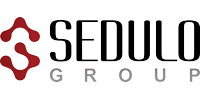Background
A leading global food manufacturer faced challenges with an increasingly complex product portfolio, resulting in operational inefficiencies, diluted brand focus, and suboptimal profitability. Traditional SKU rationalization methods, which focused primarily on internal financial metrics, had failed to capture the full strategic value of each product. The client sought a more holistic, data-driven approach to optimize their SKU portfolio without compromising customer satisfaction or market competitiveness.
Solution
Sedulo implemented a demand-driven SKU rationalization model that expanded beyond conventional cost-cutting techniques. The approach integrated nine key dimensions of SKU performance, combining both internal and external data sources:
- Internal Data: Sales velocity, unit economics, contribution margin, channel concentration, customer lifetime value (CLV), and repeat purchase behavior.
- External Data: Customer importance, competitive differentiation, lifecycle stage, and strategic role.
Each SKU was scored and weighted based on the client’s strategic priorities. The result was a multi-dimensional SKU map that categorized products into strategic roles such as:
- Stars
- Cash Cows
- Channel Winners
- Loyalty Builders
- Trial Creators
- Competitor Stoppers
- Innovation Bets
- Rationalization Candidates
This enabled the client to make nuanced decisions about which SKUs to invest in, reposition, or retire.
The Outcome
The demand-driven rationalization led to significant improvements across the portfolio:
- 20% reduction in low-performing SKUs, freeing up operational capacity and reducing complexity.
- 15% increase in average SKU profitability, driven by better alignment with customer preferences and market trends.
- Improved channel partner satisfaction, as the portfolio became more tailored to their needs.
- Enhanced innovation pipeline, with clearer identification of whitespace opportunities and innovation bets.
Most importantly, the client transitioned from a reactive SKU management approach to a strategic, insight-led portfolio optimization model, positioning them for sustainable growth and competitive advantage.


